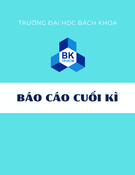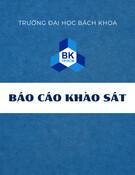
Note
Cold
storage
of
in
vitro
cultures
of
wild
cherry,
chestnut
and oak
LV
Janeiro,
AM
Vieitez,
A
Ballester
Instituto
de
Investigaciones
Agrobiológicas
de
Galicia
(CSIC),
Apartado
122,
15080
Santiago
de
Compostela,
Spain
(Received
13
March
1994;
accepted
4
October
1994)
Summary —
Shoot
cultures
of
chestnut,
oak
and
wild
cherry
have
been
stored
at
low
temperature
(2°C)
for
3, 6,
9
and
12
months.
Cultures
were
stored
immediately
after
the
last
subculture
or
10
d
later.
Survival
and
morphogenetic
parameters
have
been
recorded
at
the
end
of
each
period
of
storage.
Both
survival
and
proliferation
capacity
of
the
explants
were
influenced
by
the
timing
of
the
transfer.
When
the
explants
were
stored
10
d
after
the
subculture,
higher
percentages
of
survival
and
multiplication
rates
were
obtained.
The
4
species
studied
may
be
maintained
at
2°C
for
up
to
1
year
without
subculturing.
chestnut
/
cold
storage
/
in
vitro
conservation
/
oak
/
wild
cherry
Résumé —
Conservation
au
froid
de
pousses
in
vitro
de
merisier,
châtaignier
et
chêne.
Des
pousses
en
culture
in
vitro
de
châtaignier,
de
chêne
et
de
merisier
ont
été
conservées
à
basse
tem-
pérature
(2°C)
pendant
3, 6,
9 et
12
mois.
Ces
pousses
furent
stockées
juste
après
le
dernier
repiquage
ou
10 j
plus
tard.
Les
taux
de
survie
et
les
caractéristiques
morphologiques
ont
été
déterminées
à
la
fin
de
chaque
période
de
conservation.
La
survie
comme
la
capacité
de
prolifération
des
explants
sont
influencées
par la
durée
de
la
phase
de
transfert
(tableaux
I,
II ;
fig
1).
Le
stockage
des
explants
10 j
après
le
repiquage
s’est
traduit
par
de
forts
taux
de
survie
et
de
multiplication.
Les
4
espèces
étudiées
peuvent
être
maintenues
à
2°C
pendant
plus
d’une
année
sans
repiquage.
châtaignier / chêne / merisier / culture
in
vitro
/ stockage
au
froid
*
Correspondence
and
reprints

INTRODUCTION
Collections
of
seeds
and
clonal
material
are
traditional
ways
of
storing
genetic
resources.
Use
of
cold
stored
(0-10°C)
in vitro
cultures
is
a
complementary
method
of
maintaining
such
genetic
resources.
In
vitro
conservation
programs
for
forest
trees
are
not
as
com-
prehensive
as
they
are
for
agricultural
crops.
As
mentioned
by
Millar
(1993),
the
Interna-
tional
Board
for
Plant
Genetic
Resources
(IBPGR)
1989
database
reported
only
8
tree
species
that
have
been
successfully
stored
and
regrown
under
slow
growth
tissue
cul-
ture
conditions.
In
contrast,
it
has
been
known
for
many
years
that
fruit
tree
cultures
can
be
stored
at
low
temperatures
for
long
periods
of
time:
apple
(Lundergan
and
Jan-
ick,
1979;
Orlikowska,
1992)
and
Prunus
rootstocks
(Druart,
1985;
Marino
et al,
1985).
Several
factors
appear
to
regulate
the
success
of
cold
storage
of
in
vitro
cultures:
the
physiological
state
of
shoots,
the
type
of
explant,
the
medium,
the
container,
the
temperature
and
the
light
conditions
(Orlikowska,
1992).
Meier-Dinkel
(1990)
and
Gebhardt
et al (1993)
reported
the
restricted
growth
storage
of
oak
genotypes
by
using
a
combination
of
low
temperature,
chemical
growth
regulators
and
the
application
of
hypertonic
osmotica.
However,
our
aim
is
to
develop
a
simple
system
of
cold
storage
for
hardwood
species
using
the
least
num-
ber
of
variables
possible.
This
paper
describes
the
survival
and
proliferation
of
chestnut,
wild
cherry
and
oak
in
vitro
cultures
after
storage
at
2°C
for
3, 6,
9
and
12
months.
The
variable
used
was
the
time
of
transfer
to
low
temperature,
immediately
after
subculture
or
10
d after
subculture.
MATERIALS
AND
METHODS
In
vitro
established
cultures
of
the
following
species
have
been
used
throughout
this
work:
wild
cherry
(Prunus
avium
L,
clone
1),
oak
(Quercus
petraea
(Mattuschka)
Lieblein,
clone
1;
Q
robur L,
clones
NL3
and
7172)
and
chesnut
(Castanea
sativa
x
C
crenata
Siebold
&
Zucc,
clone
M5).
Wild
cherry
was
routinely
subcultured
on
Murashige
and
Skoog
(1962)
medium
supple-
mented
with
4.44
μM
6-benzyladenine
and
0.49
μM
indolebutyric
acid;
oak
and
chestnut
clones
were
subcultured
on
Gresshoff
and
Doy
(1972)
medium
supplemented
with
0.22
μM
6-benzyl-
adenine
(except
clone
7172,
in
which
0.44
μM
6-
benzyladenine
was
used).
All
media
were
sup-
plemented
with
30
g/l
sucrose
and
8
g/l
Sigma
agar.
The
pH
was
adjusted
to
5.5-5.6
before
autoclaving.
All
cultures
were
subcultured
every
month
under
standard
growth
conditions:
a
pho-
ton
flux
density
of
30
μEm
-2
s
-1
delivered
during
a
16
h
day
by
cool
white
fluorescent
lamps,
with
day
and
night
temperatures
of
25
and
20°C,
respectively.
For
cold
experiments,
2
treatments
were
stud-
ied:
1)
T=
0
in
which
the
explants
were
placed
in
the
cold
immediately
after
subculture;
and
2)
T =
10
in
which
the
explants
were
placed
in
the
cold
10
d
after
subculture.
During
these
10
d
the
cul-
tures
were
kept
under
standard
growth
conditions.
Six
explants
(3
shoot-tips
and
3
nodal
seg-
ments,
8-10
mm
in
length)
were
placed
in
each
200
ml
glass
jar
filled
with
50
ml
of
the
multipli-
cation
medium.
In
wild
cherry,
only
shoot
tips
were
used
due
to
the
characteristics
of
the
culture
Four
replicates
jars
(24
explants
in
total)
were
used
per
treatment
and
for
each
period
of
storage.
The
glass
jars
were
kept
in
Sanyo
Medicool
Cab-
inets
at
2
±
1°C
under
dim
light
conditions
(1.3
μEm
-2
s
-1
)
provided
by
exterior,
cool
fluorescent
lamps.
After
3, 6,
9
or
12
months
of
cold
storage
the
cultures
were
removed
from
the
cabinets.
All
cultures
were
immediately
transferred
to
fresh
medium
and
they
were
kept
in
a
growth
cham-
ber
under
standard
growth
conditions.
Controls
(0
months
in
cold)
were
maintained
under
these
standard
conditions
during
the
experiment.
After
1
month,
the
following
parameters
were
recorded:
survival,
as
the
percentage
of
cultures
that
can
proliferate;
number
of
new
shoots
per
explant;
number
of
segments
(internodes,
over
8
mm)
per
explant;
length
of
longest
shoot
per
explant;
and
multiplication
coefficient
defined
as
the
product
of
the
proportion
of
the
explants
with
shoot
devel-
opment
and
the
mean
number
of
segments
per
explant
(Sánchez
and
Vieitez,
1991).
The
least
significant
differences
of
the
results
were
esti-
mated
by
2-way
analysis
of
variance
(Sokal
and
Rohlf, 1981).

RESULTS
AND
DISCUSSION
Cold
storage
moderately
affected
the
appearance
of
the
cultures
of
the
species
studied
after
removal
from
the
cold
cabi-
nets.
In
chestnut
and
oak,
shoot
tip
necrosis
was
observed
and
the
leaves
appeared
to
be
necrotic,
some
of
them
finally
being
shed.
This
effect
became
more
evident
with
the
length
of
cold
storage.
Cultures
placed
in
the
cold
at
T =
0
were
more
affected
than
those
stored
at
T
10.
The
2
types
of
explant
studied,
shoot
tips
and
nodal
seg-
ments,
were
affected
in
the
same
manner.
The
necrosis
usually
starts
in
the
upper
part
of
the
explant
spreading
down
to
the
lower
part
with
time.
In
wild
cherry,
necrosis
was
hardly
evident
(only
a
small
number
of
leaves
showed
signs
of
necrosis)
although
chlorotic
symptoms
appeared
due
to
the
low
intensity
of
the
light
in
which
they
grew.
In
comparison
with
controls,
no
noticeable
growth
was
observed
in
relation
to
the
length
of
storage
(3,
6,
9
or
12
months)
in
any
type
of
explant
and
there
was
little
development
of
basal
callus.
After
1
month
of
culture
under
standard
conditions,
the
survival
of
the stored
explants
was
markedly
influenced
by
the
timing
of
the
transfer
to
cold
storage
as
well
as
by
the
length
of
the
storage
itself
(table
I).
Wild
cherry
was
less
affected
than
the
other
3
species
tested.
With
the
T
10
treatment
most
of
the
clones
assayed
survived
(except

Q
petraea)
even
after
12
months
of
cold
storage
(nearly
100%)
whereas
with
the
T =
0
treatment,
the
survival
percentage
dropped
dramatically
and
after
6
and
12
months,
survival
was
reduced
to
42
and
29%,
respectively,
in
chestnut
cultures.
Although
to
a
lesser
extent,
the
oak
species
studied
were
also
affected.
The
interaction
of
the
2
factors
(start
and
length
of
storage)
was
significant
in
the
case
of
clones
NL3
(oak)
and
M5
(chesnut).
The
proliferation
capacity
of
the
explants
after
the
different
periods
of
exposure
to
cold
conditions
was
evaluated
after
the
cul-
tures
had
been
transferred
to
fresh
medium
and
left
in
the
growth
chamber
for
1
month.
Table
II
shows
the
length
of
the
longest
shoot.
In
wild
cherry,
the cold
clearly
improved
the
growth
of
the
shoots,
inde-
pendently
of
the
time
of
storage.
As
the
stor-
age
time
increased,
the
growth
of
the
shoots
increased
in
the
first
subculture
after
stor-
age,
although
this
effect
was
not
a
perma-
nent
one,
but
returned
to
control
levels
in
subsequent
subcultures
(Janeiro,
1993).
In
the
3
oak
clones
studied,
the
cold
condi-
tions
were
clearly
detrimental
to
shoot
elon-
gation
after
storage.
The
length
of
the
longest
shoot
decreased
as
the
time
in
cold
storage
increased,
as
much
with
T =
0
as
with
T=
10,
although,
as
occurred
with
wild
cherry,
the
cultures
recuperated
in
later
sub-
cultures.
In
chesnut,
with
the
T =
0
treat-
ment,
a
decrease
in
growth
was
observed
in
the
first
subculture
after
storage.
With
the
T
10
treatment,
the
results
were
variable.
The
proliferation
capacity
of
the
cultures
was
also
determined
by
the
multiplication
coefficient,
which
is
a
more
useful
parame-
ter
than
the
multiplication
rate
since
the
for-
mer
deals
with
the
percentage
of
viability
and
the
latter
only
with
the
growth
of
live
explants.
The
results
obtained
are
shown
in
figure
1.
The
marked
influence
of
the
time
of
transfer
to
storage
on
the
multiplication
coefficient
is
clearly
shown.
For
T =
0,
a
reduction
in
the
multiplication
capacity
in
comparison
with
controls
was
observed
in
the
cultures
which
became
more
and
more
evident
the
longer
they
were
exposed
to
the
cold.
Oak
clones
were
the
most
suscepti-
ble,
followed
by
chestnut,
and
to
a
lesser
extent,
wild
cherry.
For
T=
10,
a
distinct
increase
in
the
multiplication
coefficient
was
observed
with
respect
to
wild
cherry
and
chestnut;
this
was
maintained
at
a
high
level
throughout
the
various
periods
tested.
In
oak
clones,
values
similar
to
the
control
were
obtained,
but
there
was
not
the
loss
of
productivity
observed
for
T =
0.
The
results
obtained
in
this
work
clearly
show
the
possibility
of
keeping
wild
cherry,
oak
and
chesnut
cultures
in
cold
storage
for
at
least
1
year
without
subculturing.
When
stored
after
10
d
of
preculture
in
the
growth
room,
the
proliferation
capacity
of
the
cul-
tures
was
retained.
In
this
way,
cold
stor-
age
offers
a
potential
means
of
reducing
costs
of
micropropagation
and
affords
an
alternative
method
for
conserving
genetic
resources
of
forest
trees.
Of
the
agents
named
as
factors
that
may
influence
the
success
of
cold
storage
(Orlikowska,
1992),
we
have
concentrated
on
the
physiological
state
of
the
explants
at
the
time
of
being
placed
in
cold.
As
occurs
in
the
case
of
hybrid
poplar
shoots
(Son
et
al,
1991),
the
survival
capacity
of
our
cul-
tures
rose
significantly
if
the
introduction
took
place
10
d
after
the
latest
subculture
rather
than
immediately
after.
For
its
sub-
sequent
survival
under
cold
conditions,
it
seems
to
be
important
that
the
explants
recover
from
the
stress
brought
about
by
the subculture
process.
The
culture
morphology
hardly
changed
with
the
storage.
Previous
results
(unpub-
lished)
have
shown
that
our
cultures
have
a
better
appearance
if
the
cold
treatment
is
carried
out
in
dim
light
rather
than
in
the
dark.
Similar
results
were
reported
by
Marino
et
al
(1985)
in
Prunus
rootstocks.
In
our
case,
wild
cherry
showed
clear
symptoms
of
etiolation;
in
the
other
species
studied,

















